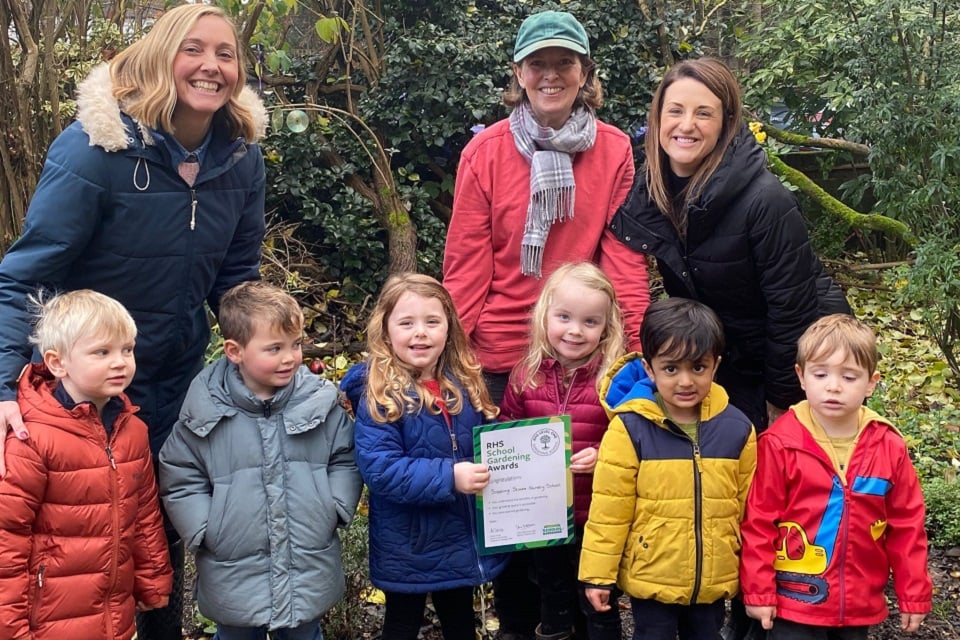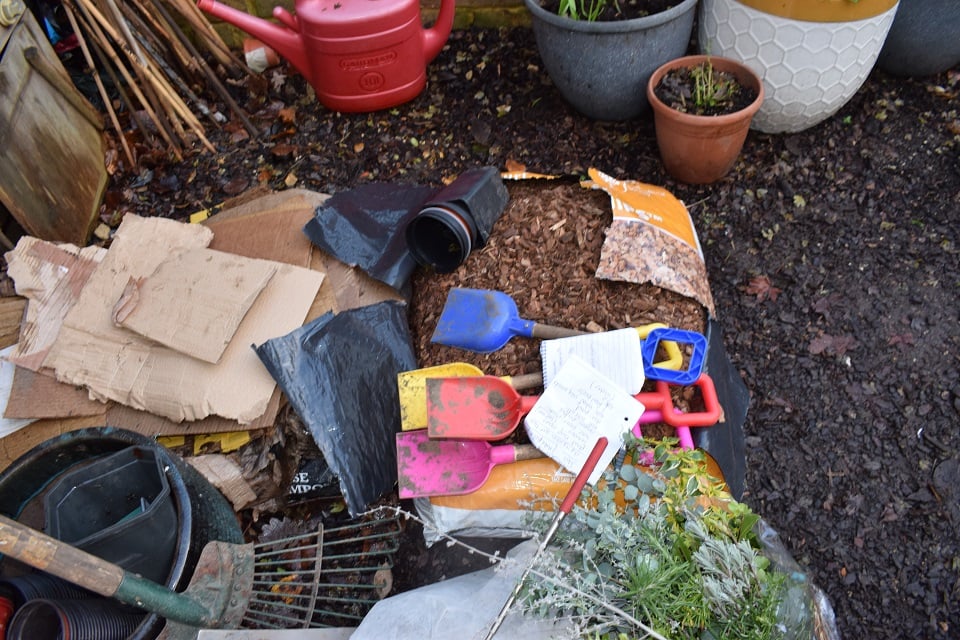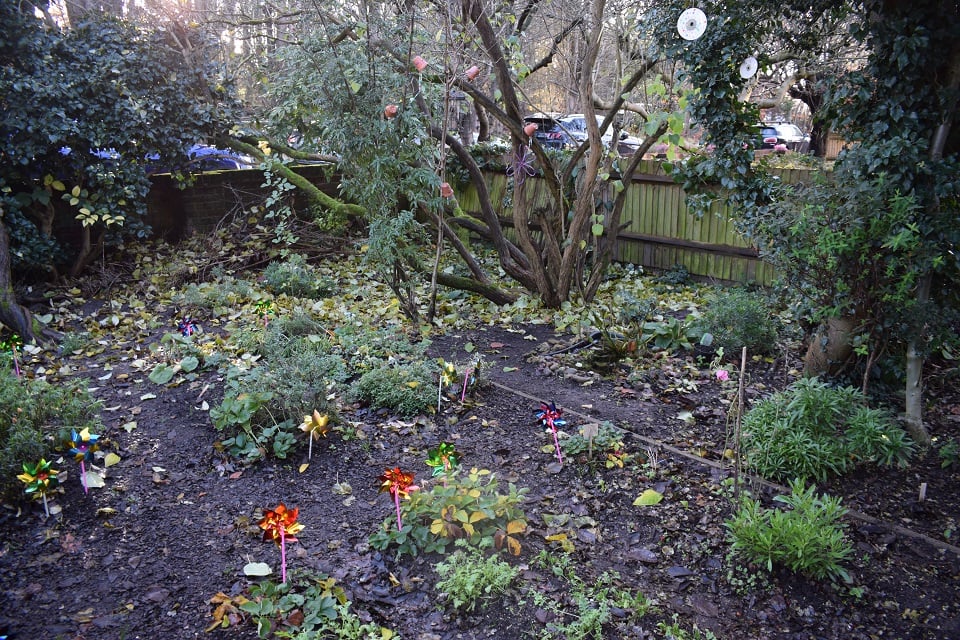Toddlers getting started on their gardening journey
Stepping Stones Nursery in Surrey have recently achieved their Level 1 RHS School Gardening Award. Here we find out about how a neglected plot has become a much-loved garden and pick up some tips when creating a garden for children under five years old.
30 January 2024

Work began at Stepping Stones Nursery in Hinchley Wood, Surrey, to clear brambles, remove litter, debris and large rocks and prune some of the tree branches from a plot of neglected land at the front of the nursery that staff thought had the potential to be a garden.

A fence was added, an existing fence fixed and peat-free compost brought in to create raised oblong beds. Pathways were then made using bark chipping and compost bays built. Finally, a water butt was installed. Lara Dodson, former teaching assistant and now part-time volunteer gardener, led the work.
Learning along the way
Once the area had been made safe, the children, who are all aged three and four, started gardening. The children go out in groups of five or six, a couple of mornings each week, to garden with Lara. In the first growing season, they sowed, planted, watered and harvested potatoes in bags, peas, broad beans, lettuce, spinach, radish, beetroot, peppers in pots and tomatoes. They also planted mint, chives and oregano in the sensory herb patch and flowers such as hollyhocks, strawflowers, snapdragons and cornflowers.

“Straight away it was clear that the children enjoyed being outside in the fresh air having fun. They go out in all weathers and love being given jobs.”
- Jo Wilkinson, Penguins class teacher
Without knowing it, the children are learning along the way; taking turns, following instructions, being patient and respecting nature. Jo told us they are always keen to pull on their coats and wellies and come back into the classroom buzzing.

“I like it when we get to wear our wellies in the mud. I love digging to find loads of wriggly worms.”
- Oli, age 4
Give it a go
The children particularly enjoy activities such as watering, seed sowing and harvesting fruit and veg. Lara explains that she is often led by the children and what they like doing. Her motto is to ‘give it a go’ and she’s been amazed by what has worked. Last summer, the children harvested salad, runner beans, peppers, tomatoes and strawberries – the latter two still cropping in late October.

Five activities nursery children enjoy in the garden
|
1. Watering – the children love anything connected with water. Filling cans and watering plants.
|
|
2. Using the dibber to make holes for seeds, looking at and feeling different seeds in their hands, gathering dried seed from flowers e.g. hollyhocks to scatter in the wildflower patch.
|
|
3. Observing the wildlife in the garden – snails, worms, bees.
|
|
4. Feeding the garden birds by filling their feeder.
|
|
5. Harvesting fruit, veg and salad crops – the children like choosing what to grow and love growing and picking strawberries and tomatoes.
|
In the autumn, the children planted spring bulbs – tulips and daffodils – and sowed salad leaves, spinach and chard as well as planting garlic and onion sets. Cloches are providing some protection over the winter months.

For Lara, one of the most rewarding things has been seeing children who were initially quite shy grow in confidence, connect with nature and enjoy the satisfaction, responsibility and sense of pride as they learn new skills, do quite ‘grown up’ jobs and see plants they have sown or planted grow.

“We get our water from the big tank and fill up our own watering cans. We water the flowers and seeds and the carrots so they can grow and then we can eat them all up at tea time.”
- Eddie, age 4

This two-part garden is evolving. The more structured space for growing edibles and flowers sits next to a more mature area that includes trees, shrubs, a small, very shallow pond and a bird feeder. The pond was created in 2022 and is perhaps one of the most popular additions to the garden. It is now well established with small plants and is being used by insects. It has sloping sides to ensure any wildlife can easily get out.
Highlights
“One of the children's gardening highlights was recycling chopped and cleared branches from the garden to make a log pile house for hedgehogs.”
- Lara Dodson
Other high points include planting two small apple trees and releasing butterflies into the allotment. For Lara, getting birds established in the garden and a successful year-long bumper harvest makes all the hard work worthwhile.
Future plans
What’s next? Seeing the garden mature and become an established part of the nursery has been rewarding for everyone involved. The children's families donated wellies, plant pots, wooden pallets, seeds, shrubs, gloves and leaves for composting, to support the nursery garden.


Plans for the year ahead include installing a second water butt and getting the children to help build a bug hotel with pallets offered by a local school. The children have voted on what they want to sow and grow in the spring. Ideas include potatoes, sweetcorn, carrots and melons. The aim is to also have a year-long season of growing flowers and veg with more plants for pollinators. Bench seats made out of logs are also a priority so that the children have somewhere to sit in the garden.
“Achieving the Level 1 RHS School Gardening Award has been positively received by the whole nursery community. The awards give us structure, direction and a way of celebrating achievements.”
- Emma Cheadle, Headteacher

For more information about our School Gardening Awards, visit this webpage. Our free five-level awards scheme provides achievable goals to help pupils gain the benefits that gardening brings.
Lara’s tips for a garden for young children
|
1. Attract wildlife – adding a squirrel-proof birdfeeder has helped attract wildlife, the children like spotting robins and blue tits and filling up the feeder.
|
|
2. Install a water butt – this has been vital to ensure the garden is as far as possible self-sufficient for water. An added bonus is that the children love turning the tap on and off to fill their watering cans.
|
|
3. Add paths and raised beds – soft bark chippings make great paths between the raised veg and flower beds. The children can safely wander round the garden and have easy access to the plants. They enjoy topping up the bark chippings. I wouldn’t bother with wooden structures for the raised beds as they provide places for snail and slugs to hide, and then eat the veg. It’s easy to raise up the beds with peat-free compost and separate them with the paths.
|
|
4. Keep things simple and have fun – our two-part garden works well: the children like having the more structured veg and flower beds as well as the wilder part with the log pile, trees, shrubs, herbs, pond and birdfeeder. We garden in all weathers. While having fun they are gently being introduced to respecting nature and being curious about it however it’s important not to over teach at this young age.
|
|
5. Give things a go – we are all learning together. We haven’t got a deep layer of soil in the edibles area but have had lots of successes such as strawberries, tomatoes and peas that are used for after school club meals. We are currently growing salad leaves, spinach and chard as well as garlic and onion sets for the first time. The children scattered wildflower seeds in an area near the water butt and we are also trying to grow raspberries.
|

